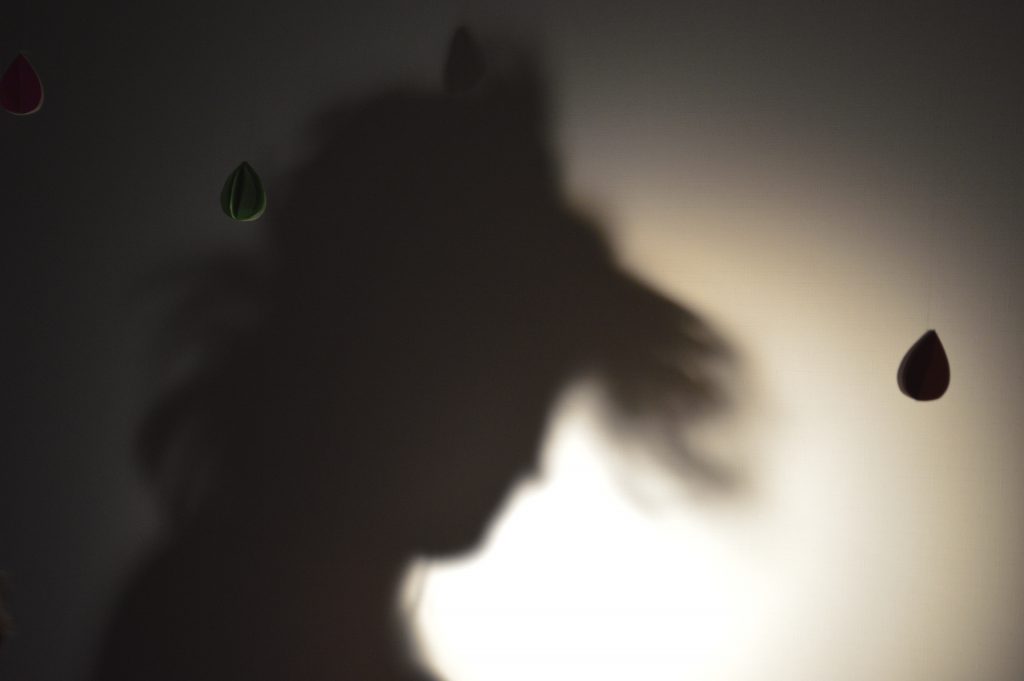On INSPIRATION and CONTRAST
When starting this brief, I was inspired by Wywrot’s use of high contrast and movement. These elements combined, worked to make her daughter’s portraits seem otherworldly and I wanted to replicate this in my photography. While Wywrot would normally contrast her figures on a white background – I wanted to achieve the inverse. I made this choice because I wanted to create a sense of intimacy with my subject, allowing the viewer to still see features and relate to a face. I choose to still utilise the high contrast as I wanted to create an other worldly effect, only I felt as if these images were more etherial and angelic than the original idea of eerie or macabre. This is a concept I’m not sure I’m completely happy with and would like to continue using high contrast in future photography trying to play with the varying levels of uncanny I can create.

Looking at these two images, I feel as if the first would have been made more impactful had I had chosen a more interesting space to shoot. Looking at my inspiration in German expressionist films, the composition was made more horrific through the use of black shapes against the white background making the figure feel more constricted. That’s another reason why I decide to utilise the chiaroscuro effect in the second image as I felt it gave my piece the tight composition I was after.
EDITING FOR HIGH CONTRAST



A lot of my editing focused around getting the whites of the image – bright, and the blacks of the image – dark. I had no problem achieving this with Lightroom as I played with the settings displayed in image 2. I would then take the image into Photoshop where I would use a combination of masking and healing to erase the background into a pure black. I would also use Levels to really make sure my blacks and whites where standing out against each other. Continuing to shoot however I will work harder to set white balance and shoot at a higher ISO to make the editing process easier. I want to push myself to create that high contrast in the photo it’s self rather than producing the effect in post. I am highlighting this to explore in my future images as I would like to see what I’m capable of achieving through camera and subject alone.
Movement
Movement was hard to capture as I struggled to find the medium between blurred images that worked and those that were rendered unreadable to the viewer. A lot of the problems I faced on the location was due to a lack of tripod and understanding when was the right time that ask my model to move. These mostly arose through a lack of experience. I believed I wouldn’t need a tripod as I wanted the intimacy that is allowed from a hand hold however when it came to trying to capture movement the strain of holding still, proved harder than I had thought. This oversight is something I will look to correct in future shots, as bringing a tripod can never really be harmful. In terms of technique, things started working the more I shot. Adjusting shutter speeds and figuring out when to ask my model to move. This is something that will only get better the more I practice and the more shot.

The images I went with for my finals, where the produce of patience and the correct shutter speed for the effects I wanted to create. I am happy with both of these images because the blur works to enhance the photo rather than obstruct it. The first was taken at a 2.50s to create the movement blur. While the second image was taken at 5.00s to create impressions of where the movement had been. I want to continue to explore exposure and shutter speed in the rest of this studio as I enjoy the varying effects then can attribute to an image. To again turn attention to the second image, I will work in the future to combine light and movement, rather than treat them as separate elements. I feel as if I had lit my subject better or shot at an ISO higher than 200, the image would be stronger as the movement would read easier. This is something that I will remember as I continue my studies.
FINAL REFLECTION
Through this project brief I have discovered that I want my work to leave emotional impact on the viewers. I feel that creating uncanny figures will leave a lasting impression, however I still have ways to go before I achieve my desired effect. While I learnt a lot about lighting to create contrast and capturing movement there is still many ways which I can improve technically when approaching a shot. For example, space and setting is something I paid little attention to while completing this brief, in future endeavors I will work to take test shots not only of the figure but the space I am shooting in as both play an equally important roll in the final image. Things like ISO, shutter-speed and F-grade where also aspects that I was unfamiliar with, though I gained quiet a bit of experience with them on this shoot, I will aim to practice more with the camera in my spare time. I feel this will also lead to trying new and more adventurous things when trying to create a body of work. Overall I was able to discover a style and direction I’d like to continue in through this studio. The use of contrast and movement of the figure inspire me to continue to play with lighting, focus and even long exposure as I hope to create work stays on the mind.









 The Cabinet of Dr Caligari (1920) Cinematography: Willy Hameister
The Cabinet of Dr Caligari (1920) Cinematography: Willy Hameister
